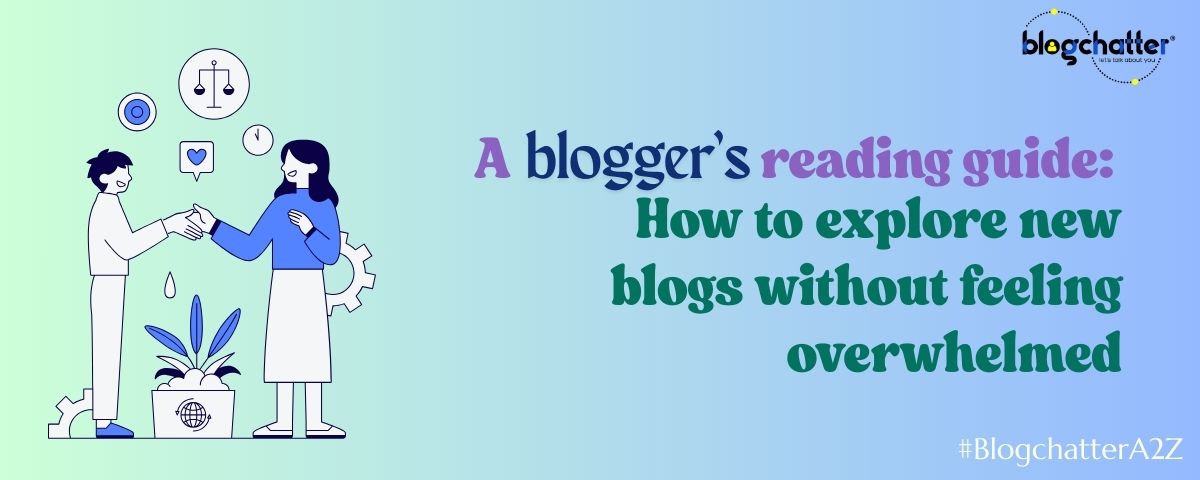Numbers are an all-important factor for any blogger or online writer. Good ‘numbers’ means we have visitors to our site, scroll-ers and hopefully readers. On May 2, 2018, we played the numbers game here at Blogchatter with our followers. We had a huge number of participants, considering that the topic is so important. It was an interesting and informative session on the whole for all of us. We shared experiences and got great insights into tools and methods that all of us adopt. New-comers learned a lot from all the fast and furious tweets.
Popular Metrics to Understand Your Blog Better
Numbers are a good way to know that you are communicating effectively.
A1. Comments. Sure fire way to understand whether what I am saying is getting communicated in the way I desired. #Blogchatter https://t.co/Y8rwu9ZQML
— Ashwini Menon (@Ashwini_Menon) May 2, 2018
- Time on Site is an important metric everyone is striving for – you want this one to be high like it says, it means the amount of time people spend on your site once they get there. The Alexa website is a useful tool for this. You can add it as an extension on your Chrome browser to check your website.
- Alexa helps to find your numbers. One participant suggested that a useful way to use Alexa effectively is to look at a three-month aggregate which will show the ups and downs – finally, a lower rank shows you have adequate views. Keep an eye on active users; keep checking at least every three months.
- Your Moz rank and your own page’s Domain Authority (DA) are also good places to look for stats on who, what and where your visitors are coming from.
New members were just feeling the ground, understanding what the metrics are all about. To many, it was all Greek & Latin, but by the end of the session people understood its necessity a bit and were eager to continue learning about Blog Metrics.
If you are just starting out a good place to first look is with page views right on your webpage. You will know how many people actually visited your page – this is an easy way to start. Alexa and page views are a great way to assess reach for the beginner.
Bounce rate is considered an important metric for the majority of serious metrics followers. Especially for those who have started out but not quite big enough for Alexa ranking. Bounce rate should ideally be low. This means that people are actually spending time on your site. If your bounce rate is high it means people are coming but are bouncing off, which isn’t a good thing. They are not finding enough to keep them there.
Seasoned bloggers often use the comments they get to gauge their popularity. The more the comments and reactions to their blog the better they know they are performing.
- Number of hits seems to be important too – per day per post
- Blog view stats are another way to keep tabs on your readers.
- Google analytics is an important tool for the serious blogger.
- Others are sessions, engagement, click through, and saves on Pinterest.
- With Insights on Facebook, you can look at stats for your FB page to find platform specific numbers.
- Twitter and Instagram also have their own stats to keep you informed of how many views you have had, how many profile visits, how many conversions, etc. This is mainly a marketing tool but useful for bloggers too to get an impression of the traffic coming to your blog through the links on social media platforms.
Find out whether you are using the right keywords by checking the organic traffic you get. A simple way to do that is to search for keywords related to your topic. When a search is done on a topic you have written about, see if your site comes up. Here the difference is that while social media traffic is temporary, coming up in search engines can give you lasting viewership.
Though many participants pointed out that this system won’t work for poems, stories, and other creative posts.
Tools and Ranking Systems to Employ to Check Statistics for Your Blog
- Moz site for DA, PA
- Google Analytics – blog stats, page views, sessions, bounce rate, audience, behavior, and location
- SEM Rush – backlinks, DA, PA
- io – to research keywords
- Google Search console
- Google search engine – to research how a user would find a result, or find you
A2 I use many tools, some of them are:
Google Analytics – for blog stats
SEM Rush – for back links, DA,PA
Keywords..io – for researching keywords. (Not much)
Google Search Console
And lastly and most important, Google Search it self. Search how a user would. #Blogchatter— Atulmaharaj (@Atulmaharaj) May 2, 2018
- Jetpack as a plug-in on your blog and have an Alexa toolbar on the browser.
- Google blogger tracks daily visits, post reads, audience and other statistics
- Webmaster tools
Google analytics and Moz tools seem to be very popular tools
- SEO – Ubersuggest and Pinterest keywords tool
- Pinterest – Tailwind Analytics and Pinterest Analytics for pin performance
A2. Google Analytics for page views, sessions, bounce rate, audience, behaviour, location.
Ubersuggest/Pinterest keyword tool for SEO.
Tailwind Analytics and Pinterest analytics for performance of my pins.
Moz for checking DA/PA.#blogchatter
— Shailaja V
(@shyvish) May 2, 2018
- WordPress blog stats give vital information too
- MailChimp for tracking newsletter opening, conversions, click-throughs, and sales
Though many of these tools are used by marketers, some writers may find them useful.
The Importance of Bounce Rate and Time Spent on Blog
As we discussed earlier, bounce rate analyses engagement in your blog. If the quality and presentation of the content are good, people will stop to read and go further into your site/page. This is especially important for self-help websites where if you use your content systematically you can help more people and so engagement increases.
Direct feedback may be more relevant for bloggers and readers, but bounce rate can tell you if you are going in the right direction.
Very important.A3 .But overall I want people to be helped by my blog .
So most of the time thats the aim.This undersy happened after the first #MyFriendAlexa campaign when I started using my content more systematically .Improves engagement .Also these #twitterchats#Blogchatter— DrAmrita BasuMisra
(@misra_amrita) May 2, 2018
It takes a lot of effort to get the Bounce Rate numbers low and to maintain it.
It is important but at the same time, if it is high it can be disappointing to see. Just remember to study where you can improve, don’t let it get you down.
Long posts that have obviously been highly researched and so hold extensive information, have a lower bounce rate and rank higher in search engines – this has been newly introduced by Google – to improve the chances for people to get to see sites that are useful to them. The lower bounce rate also tells Google that this site has information that is useful – so the page ranks higher. The smaller post may not have the information you want, so the bounce rate is higher – Google algorithms infers that visiting this site isn’t very useful for the customer, so it’s ranking is lower.
3- I’d say very important. I have noticed that heavily researched long posts (1000+ words) have lower bounce rates, more time spent on the blog, and they rank higher on search engines, as compared to smaller posts with a higher bounce rate #blogchatter
— Ritika Tiwari (@indianscrewup) May 2, 2018
Basing Blog Strategy on the Numbers
Story writers may not find it helpful in the process of writing to look at numbers. Many of our tweeters write for themselves – for the joy of writing – they don’t really feel numbers metrics are relevant to them. A few will keep writing even if what they write is not popular but because something needs to be said.
Others search for keywords, analyze posts that have done well. They analyze and try to understand why some posts are more popular than others. Another important aspect is that it depends really on what you are writing about, if it’s a product or a service and you want to get it out there, you need to analyze and learn.
Numbers are just something that leads you to a satisfactory conclusion; they should not be your ultimate goal.
Gauging Performance with Comparative or Ranking Systems
It is important to format well when you write a long post in order to get good readership. When a long post is easy to read, with proper breaks, subheadings and spaces it gets easier to read. Informative posts which are well-explained get better results.
If you feel your ranking is going down this may be what you need to concentrate on.
The Relevance of Targeting Numbers for Your Blog
Most story writers just want to enjoy the process and don’t really worry about numbers. Others are exploring the niches and hope to find what attracts visitors.
If you want to be selected for an affiliate offer or other business venture you need to care about numbers and write accordingly.
Don’t be daunted by the thought of using metrics and playing the numbers game. Remember the results you want won’t happen overnight; one must be patient and wait for the numbers to build up.
Always keep Content and Engagement – the two pillars of blogging – in mind while writing your blog and the rest should take care of itself.
Content and engagement are the two pillars of success in blogosphere.#Blogchatter https://t.co/AOm8MdPgnm
— Ravish Mani (@ravishmani) May 2, 2018







Comments
A very detailed and helpful post.
That's one worrying thing
Numbers matter!